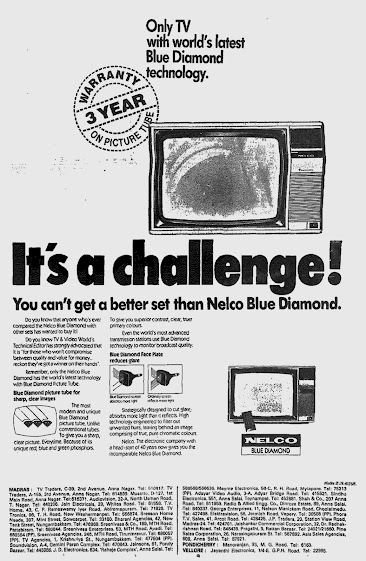Hey there! Welcome back. This is a long read, load yourself with a cup of coffee and maybe samosas.
Today I decided on sharing some learnings from this book. This is an old book, released in 2013 but its just the right book for entrepreneurs. The book begins with the story of David and Goliath. Who are they?
(AI generated image above)David is a young shepherd boy from a humble background who is courageous and confident.
Goliath, on the other hand, is a giant of a man. He is not only very tall but is also physically strong and also wears a full body armor. He is not only menacing and intimidating but also carries a javelin and a spearshaft.
Long story short, David decides to take on Goliath when none on his side is willing to and defeats him with only five stones and a slingshot.
The story has been wonderfully narrated by the author himself. Watch it here: https://www.youtube.com/watch?v=ziGD7vQOwl8
The author uses this story as an analogy to highlight the common beliefs and assumptions we normally make about strengths, weaknesses, advantages and disadvantages. (The story, by the way, is very commonly used by Marketing Professors in class too about how certain small companies have successfully taken on large companies)
What were the assumptions that David's side were making about Goliath?
a. Goliath is very powerful because of his physical strength
b. They all jump to conclusions about what they think Goliath is capable of. They think they know everything about him based on how he looks
In reality, Goliath is
a. Slow - his height, weight, armor everything adds to his slowness
b. His reactions are abnormal. Like, for example, he calls David to "come to me" instead of aggressively going after David as soon as he sees him without any protective gear.
c. He thinks it's an insult to fight David
d. He doesn't seem to have any situational awareness of what is going on around him. David had actually changed the rules of the game and Goliath was unable to see (both literally and figuratively)
The author points out that an important lesson is "the powerful and the strong are not always what they seem".
The book then describes stories from various real-life situations to further illustrate how underdogs overcome obstacles and how perceived disadvantages can lead to unexpected success.
Some interesting lessons:
1. Using unconventional methods are actually the reason why underdogs win. Malcom gives examples of a basketball team winning by playing full-court in every game, which usually is not done to end up in national championship. He also talks about how Lawrence of Arabia who led the revolt against the Turkish army defeats them by using unconventional means as he had far lesser resources when compared to the formidable Turkish army.
The question he asks is "When we see a giant, why do we automatically assume that the battle is his for the winning?"
2. What we assume to be as advantageous can actually be disadvantageous and vice versa. Here he gives an example of how a man who was put through difficulty by his father actually ensured that he values money and becomes successful in life. So much so that this man now has a big house in a rich neighbourhood and all the facilities that he only dreamed of as a child. But what was troubling the man now was how to bring up his children with similar lessons when the economic conditions are way more different than his childhood. One sentence that struck me was "People are ruined by challenged economic lives. But they're ruined by wealth as well because they lose their ambition and they lose their pride and they lose their sense of self-worth." There is an interesting graph he puts out at this stage to make a point. Have a look.

3. Little fish in big pond or big fish in small pond? Malcom shares two stories. First one is of the art group called The Impressionists from the 19th century who were the pioneers of the modern art movement. They were mocked, rejected and ridiculed for their style and were not accepted by the traditionalists. They had to take a call on whether they would pursue the traditional galleries or do something on their own. Finally they decided to exhibit their paintings independently rather than at the most prestigious gallery called Salon and go on to become most recognised and today most galleries display their work. "We strive for the best and attach great importance to getting into the finest institutions we can. But rarely do we stop and consider - as the Impressionists did - whether the most presitgious institutions is always in our best interest."
The second story is of a high-achieving student by name Caroline Sacks who chooses to enrol in Brown University, which is an Ivy League university to pursue her interest in science over a lesser known one. While she was doing brilliantly through high school and was at the top of her class, her decision to join an Ivy League university where everyone in her class was brilliant, makes her feel inadequate and she struggles both with her confidence and her grades and she finally drops out. Malcom calls her experience as "relative deprivation" - which means that "we form our impressions not globally, by placing ourselves in the broades possible context, but locally - by comparing ourselves to people in the same boat as ourselves. Our sense of how deprived we are is relative". "We underestimate how much freedom there can be in what looks like a disadvantage. It's the Little Pond that maximizes your chances to do whatever you want."
He concludes that being a Big Fish in a Small Pond is not a bad idea afterall.
4. The Theory of Desirable Difficulty - In this part of the book, Malcom explores how underdogs come to excel. He takes the case of dyslexia here and notes how many innnovators are actually dyslexic. His examples include Richard Branson, Charles Schwab, Craig McCaw, etc. He looks at two possible interpretations of this achievement: a. These people are so smart and so creative that nothing could stop them
b. They succeeded, in part, because of their disorder - meaning, they learned something in their struggle that proved to be of enormous advantage
Here Malcom highlights the case of one David Boies who struggled to read as a child and after graduating from high school worked on a construction site. But he goes on to become one of the most famous trial lawyers in the world by simply using his superior listening and memory skills. He learns by listening and asking questions and simplifies issues to their basics while his opponents got bogged down by excessive detail.
Two new phrases that I learnt here -
- "Capitalization learning - we get good at something by building on the strengths that we are naturally given"
- "Compensation learning" -strategies used to overcome knowledge limitations or weaknesses in a specific area, often by developing new skills or applying existing ones in a different way.
Malcom also explores the traits of innovators and says innovators are:
Open, Conscientious and Disagreeable. (Disagreeable meaning they are willing to take social risks - do things that others might disapprove of)
There's an example of the IKEA founder Ingvar Kampard who sold unassembled furniture at prices much lower than competition and when other manufacturers decide to boycott IKEA, Kampard decides to outsource it to Poland which was at that time in a mess.
One paragraph that stands out in this chapter "The one trait in a lot of dyslexic people I know is taht by the time we got out of college, our ability to deal with failure was very highly developed. And so we look at most situations and see much more of the upside than the downside. Because we are so accustomed to the downside. It doesn't faze us."
Desirable Difficulty suggests that not all difficulty is negative and that obstacles give one the courage to take chances that one would never otherwise have taken.
5. A virtue can be made out of a necessity. Malcom takes the example of children who have lost a parent during their early years of life go on to lead successful lives as innovators, artists and entrepreneurs becoming eminent in their field. He also brings in the study of historian Lucille Iremonger on American presidents that showed twelve out of the first forty-four US presidents lost theri fathers while they were young.
6. The conquering of fear produces exhiliration. "Courage is not something you already have that makes you brave when the tough times start. Courage is what you earn when you've been through the tough times and you discover they aren't so tough after all". Druing World War, the Germans continuously bombed London and thought that the trauma would destroy the courage of the British people but in fact, the opposite happened. With many misses, Britishers became more courageous than they had ever been before.
7. The Limits of Power - It has to be seen as legitimate, or else its use has the opposite of its intended effect. Too much power can be counterproductive. People resist unjust or oppressive authority. "More is not always better; there comes a point, in fact, when the extra resources that the powerful think of as their greatest advantage only serves to make things worse".
Malcom gives the example of harsh policing in Northern Ireland that lead to worsening the rebellion that was going on. The British made the mistake of believing that their resources, weapons, soldiers and experience were far superior to the insurgent elements that they were trying to contain. Respectful engagement could have calmed tensions.
"When people of authority want the rest of us to behave, it matters - first and foremost-how they behave"
8. Legitimacy is essential to Authority
The Principle of Legitimacy has three parts to it:
- First, people who are expected to obey authority must feel that their voices are heard
- Second, the law has to be predictable
- Third, the authority has to be fair and can't treat one group differently from the other.
If the above are missing, even the most powerful cannot maintain their control.
9. There's always a choice. Malcom gives examples of parents who have lost their children but choose to do something to help others in similar situations rather than just wallow in grief. The grief actually turns them into activists and they are able to give a more deeper sense of meaning to what is happening. They find their purpose in this madness.
The book thus is full of instances where ordinary people and groups use out-of-the thinking and off-beat/unusual ways to defeat powerful people.
The key takeaway is that to be an underdog does not mean it is a disadvantage, it can be an opportunity to turn the weakness into a unique strength. This is applicable to any aspect of life be it business, war, education or life in general. Those who seem to be at a disadvantage can actually reverse their situation by innovating, altering and taking advantage of unexpected strengths.























